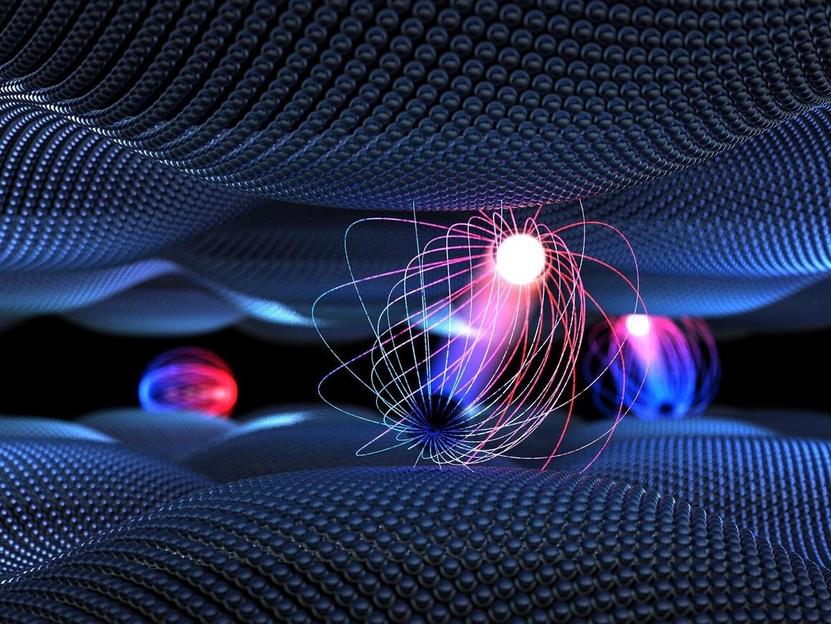Research team observes the formation of "dark" Moiré interlayer excitons for the first time

An international research team led by the University of Göttingen has for the first time visualized a fundamental physical phenomenon that plays a role in the conversion of sunlight into electrical energy. The scientists have succeeded in making so-called dark moiré interlayer excitons visible and explaining their formation using quantum mechanics methods. The researchers show how an experimental technique newly developed in Göttingen, time-resolved pulse microscopy, provides the deepest microscopic insights into these technologically relevant questions. The results have been published in the journal Nature .
Atomically thin structures made of two-dimensional semiconductor materials are promising candidates for future components in electronics, optoelectronics and photovoltaics. The properties of these semiconductors can be controlled in a fascinating way: the atomically thin layers can be stacked on top of each other like Lego bricks. However, there is another important trick: While Lego bricks can only be stacked straight or rotated by 90 degrees, the angle of rotation can be set at will in the construction of the semiconductor structures, and it is precisely this angle of rotation that is of interest for the production of new types of solar cells. So, while the rotation angle can be a breakthrough control parameter for new technologies, it also introduces experimental challenges: Typical experimental approaches have only indirect access to the moiré interlayer excitons, are more or less 'blind' to the 'dark' excitons. "With the help of time-resolved pulse microscopy, we make these actually dark excitons visible," explains Dr. Marcel Reutzel, junior research group leader in the Faculty of Physics at the University of Göttingen. "In this way we can measure how the excitons are formed on the timescale of one millionth of a millionth of a millisecond. We can describe the dynamics of the formation of these excitons in a quantum mechanical theory, which the research group of Prof. Dr. Ermin Malic from Marburg developed.” "With the help of time-resolved pulse microscopy, we make these actually dark excitons visible," explains Dr. Marcel Reutzel, junior research group leader in the Faculty of Physics at the University of Göttingen. "In this way we can measure how the excitons are formed on the timescale of one millionth of a millionth of a millisecond. We can describe the dynamics of the formation of these excitons in a quantum mechanical theory, which the research group of Prof. Dr. Ermin Malic from Marburg developed.” "With the help of time-resolved pulse microscopy, we make these actually dark excitons visible," explains Dr. Marcel Reutzel, junior research group leader in the Faculty of Physics at the University of Göttingen. "In this way we can measure how the excitons are formed on the timescale of one millionth of a millionth of a millisecond. We can describe the dynamics of the formation of these excitons in a quantum mechanical theory, which the research group of Prof. Dr. Ermin Malic from Marburg developed.” We can describe the dynamics of the formation of these excitons in a quantum mechanical theory, which the research group of Prof. Dr. Ermin Malic from Marburg developed.” We can describe the dynamics of the formation of these excitons in a quantum mechanical theory, which the research group of Prof. Dr. Ermin Malic from Marburg developed.”
"These results not only give us a fundamental insight into the formation of dark moiré interlayer excitons, but also open up a completely new perspective to study the optoelectronic properties of these new and fascinating materials," says Prof. Dr. Stefan Mathias, head of the study at the I. Physical Institute of the University of Göttingen. "In our experiment, we measure a groundbreaking signature of the moiré potential, that is, the influence of the combined properties of the two twisted semiconductor layers. In the future, we will continue to study exactly this effect in order to learn more about the resulting material properties.”







